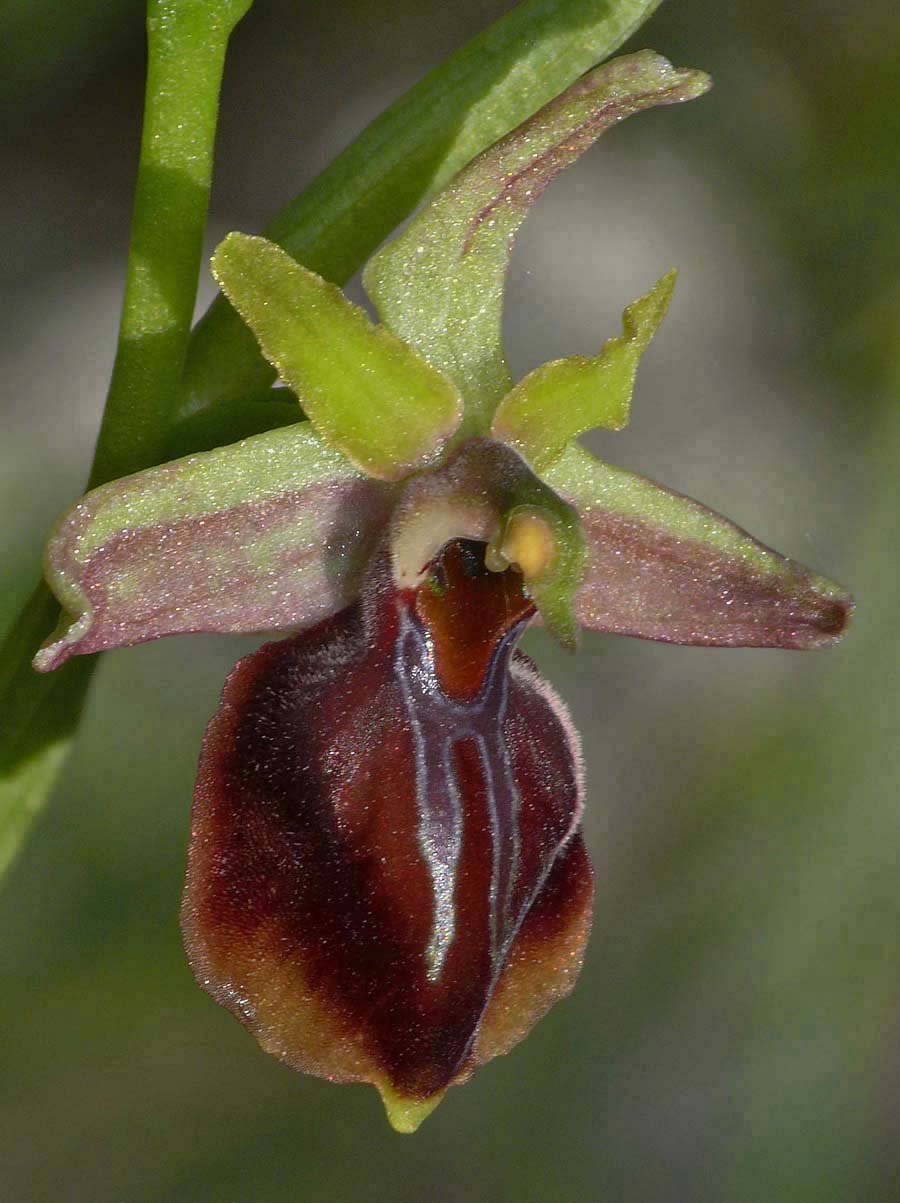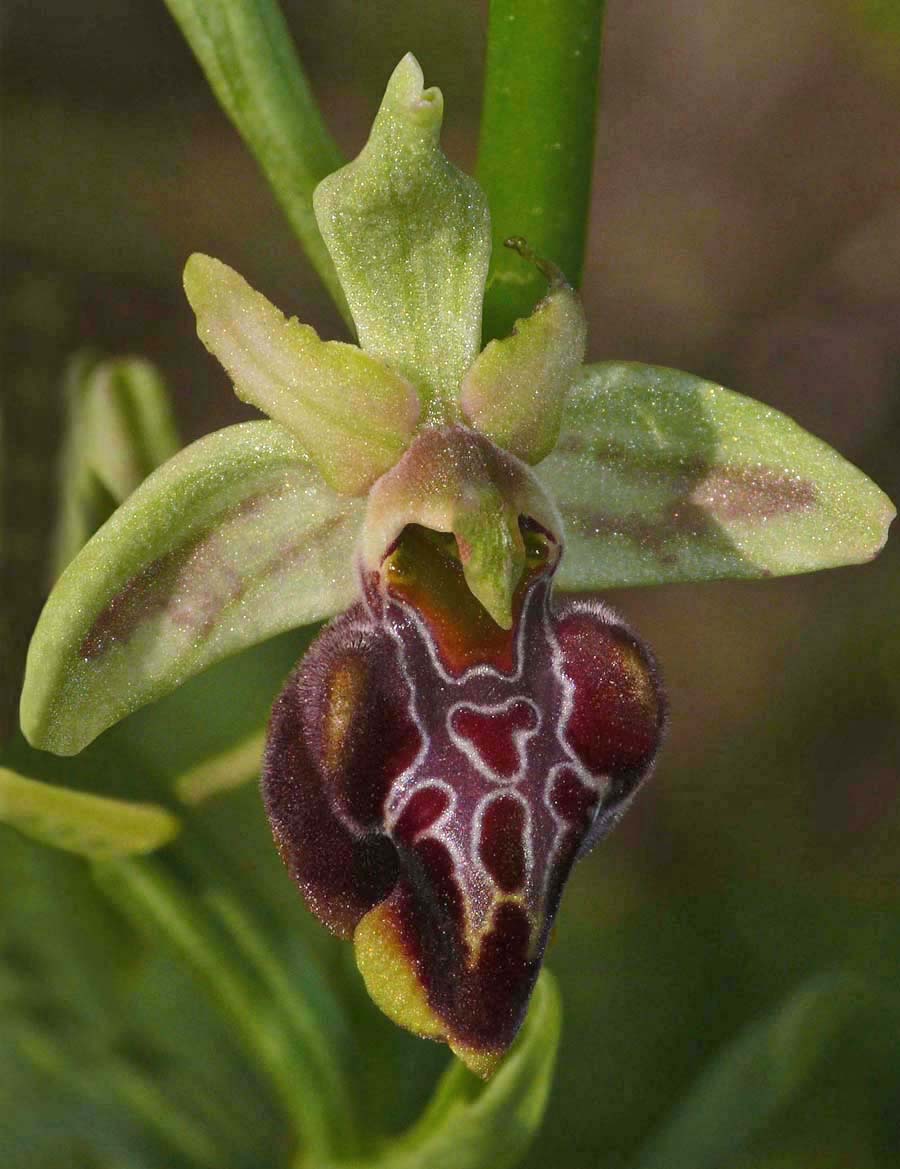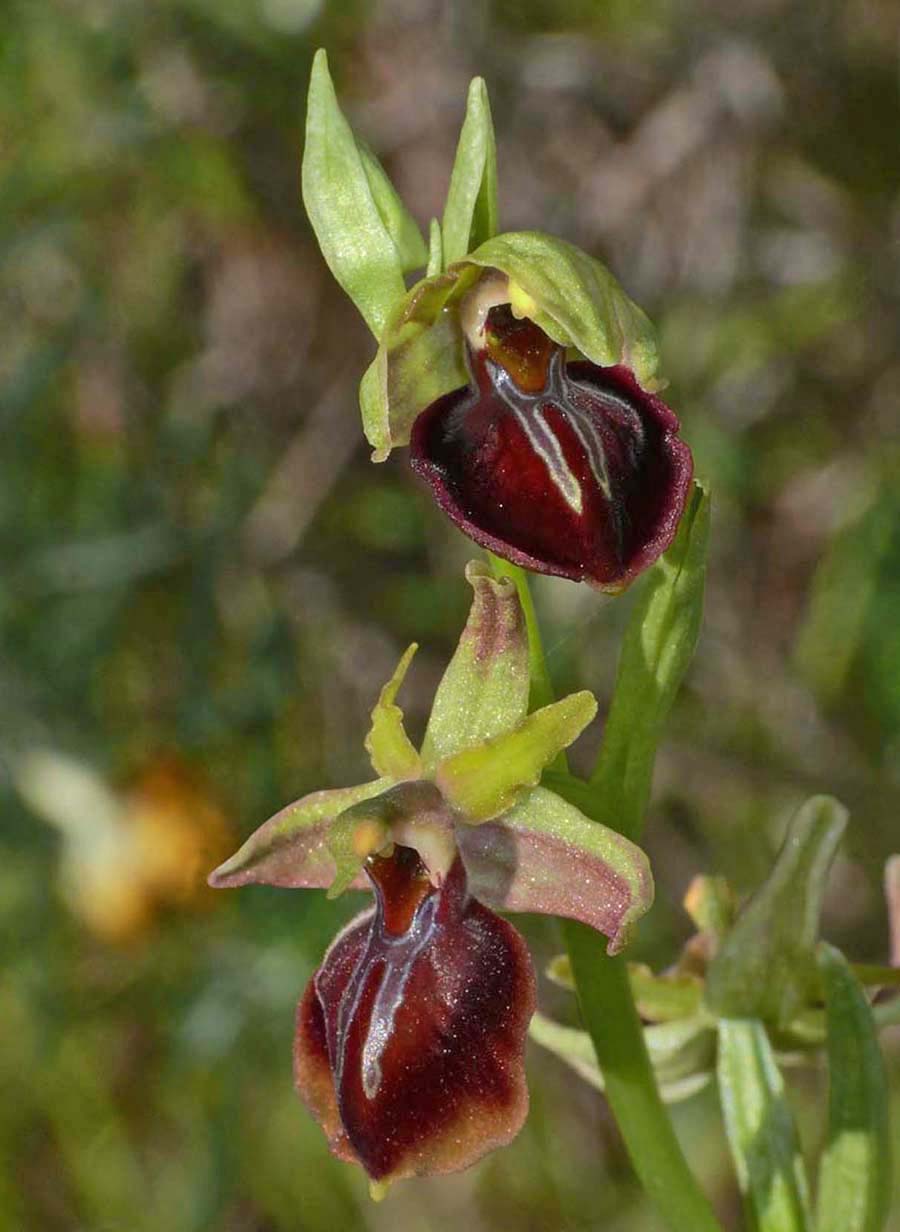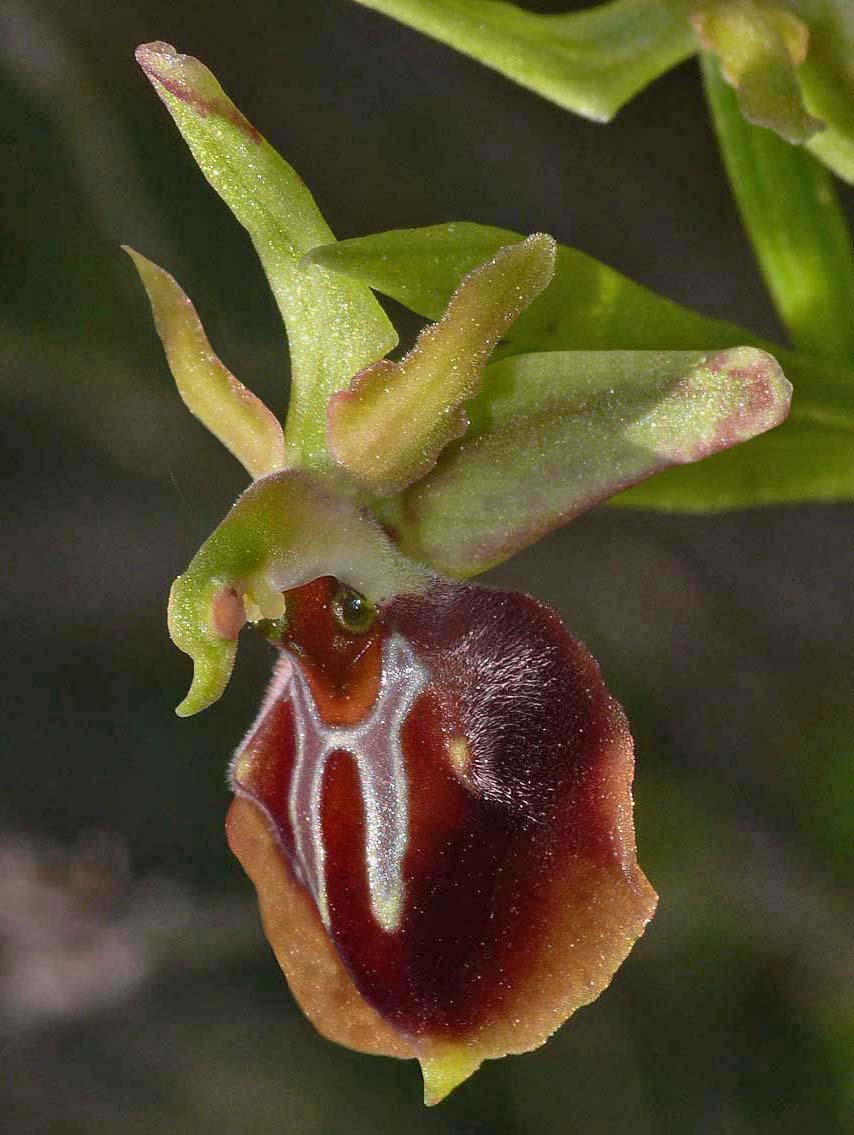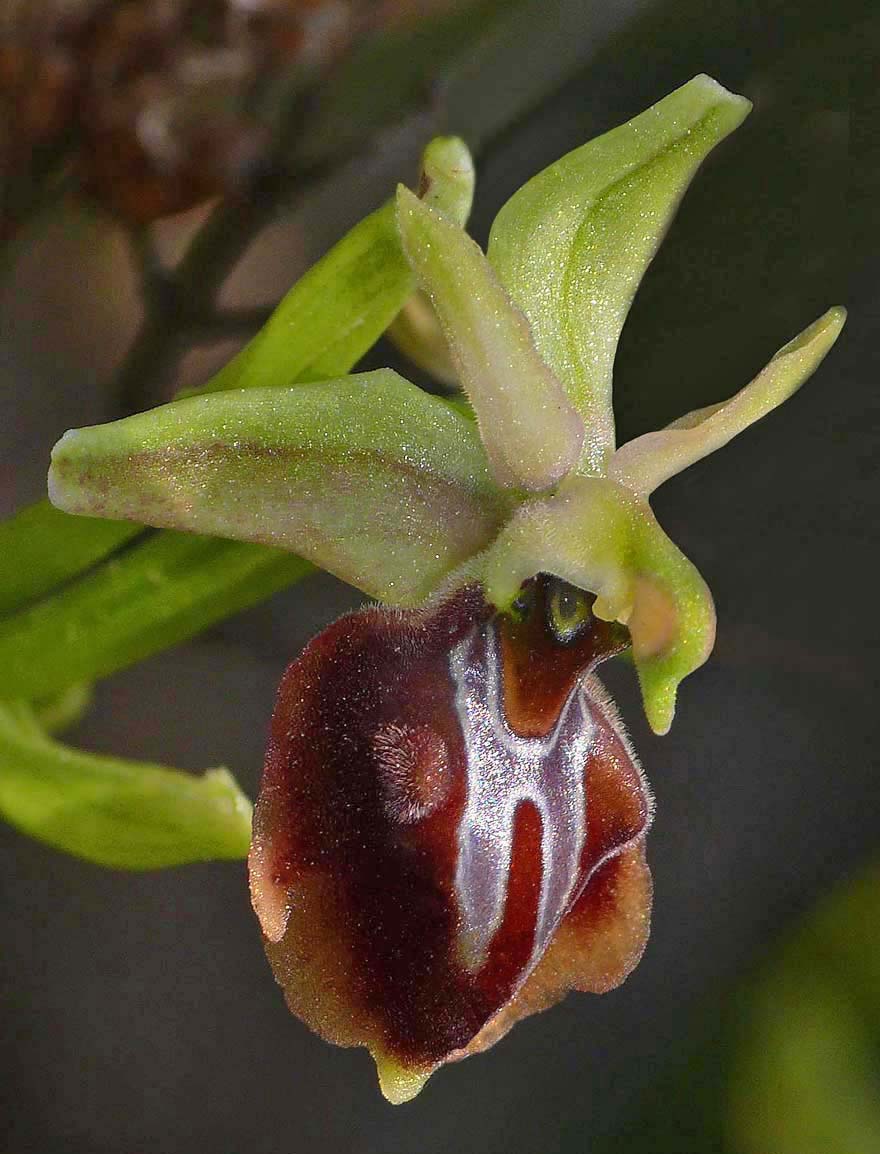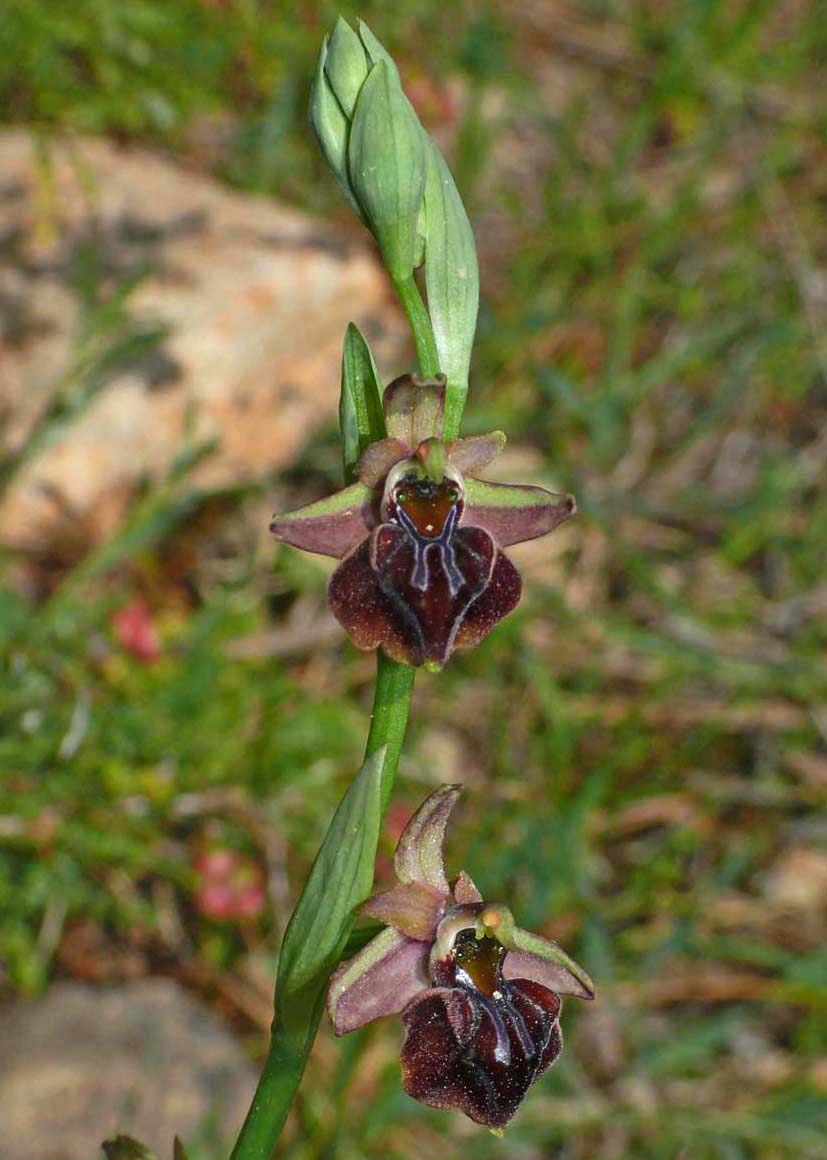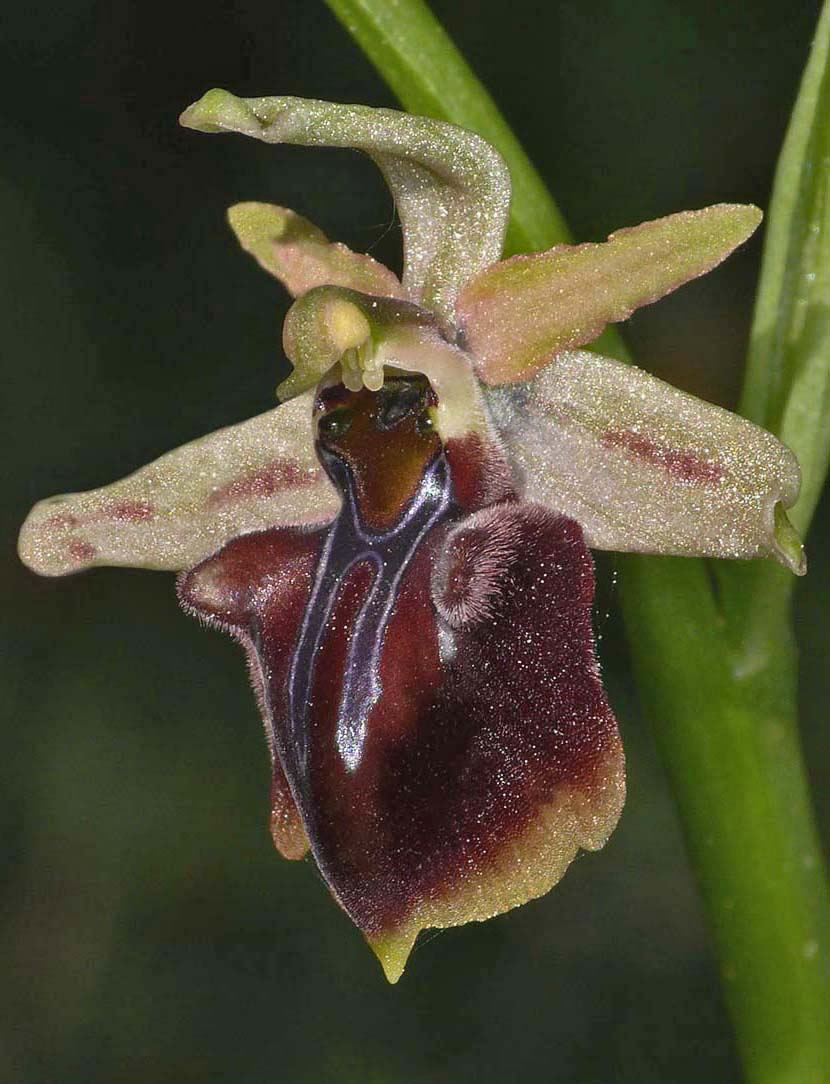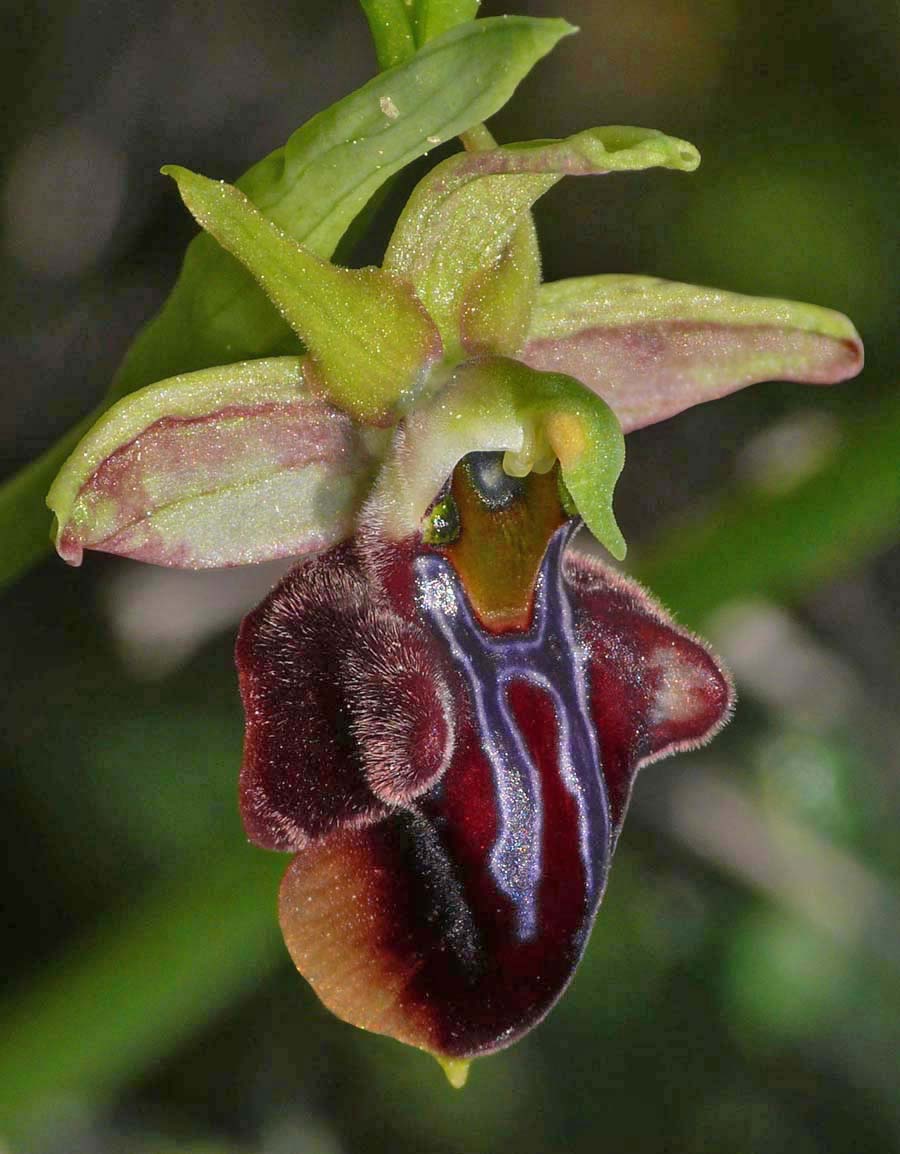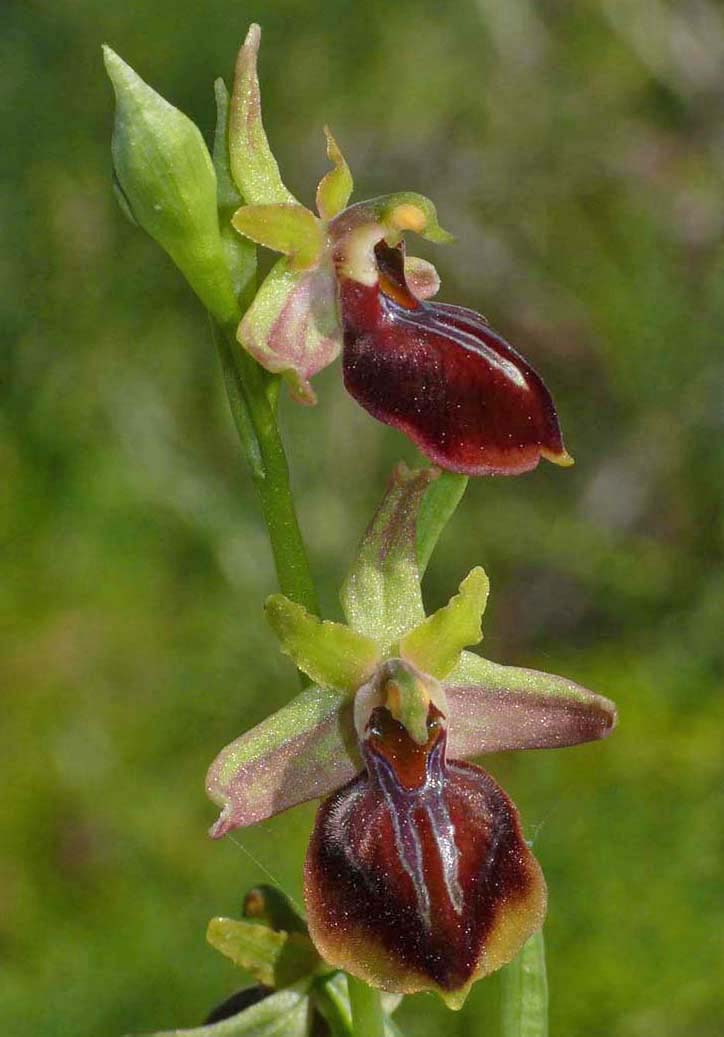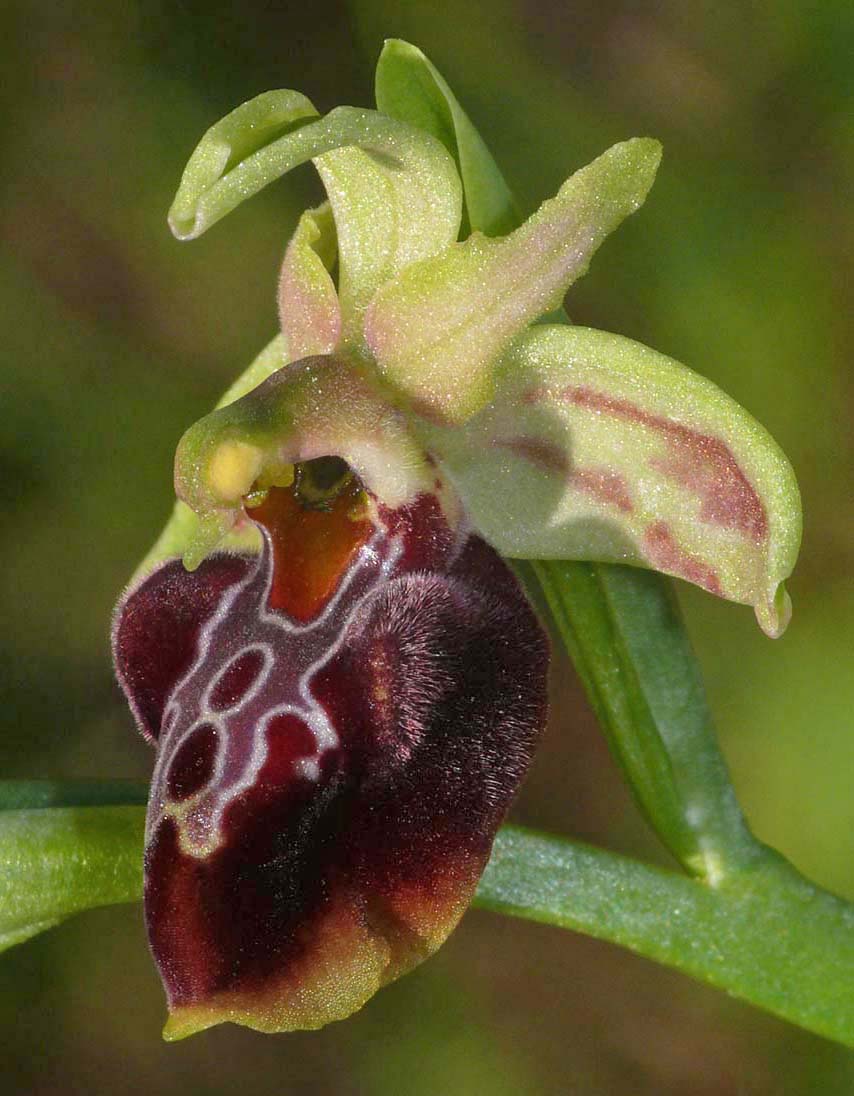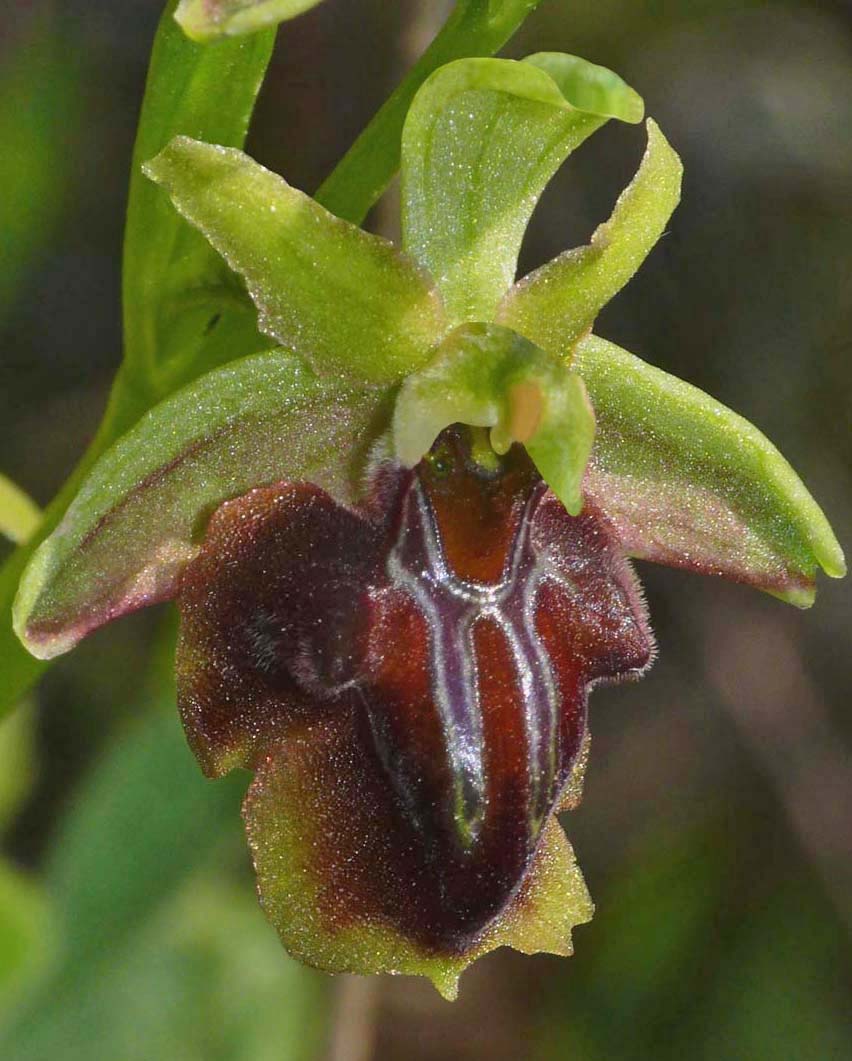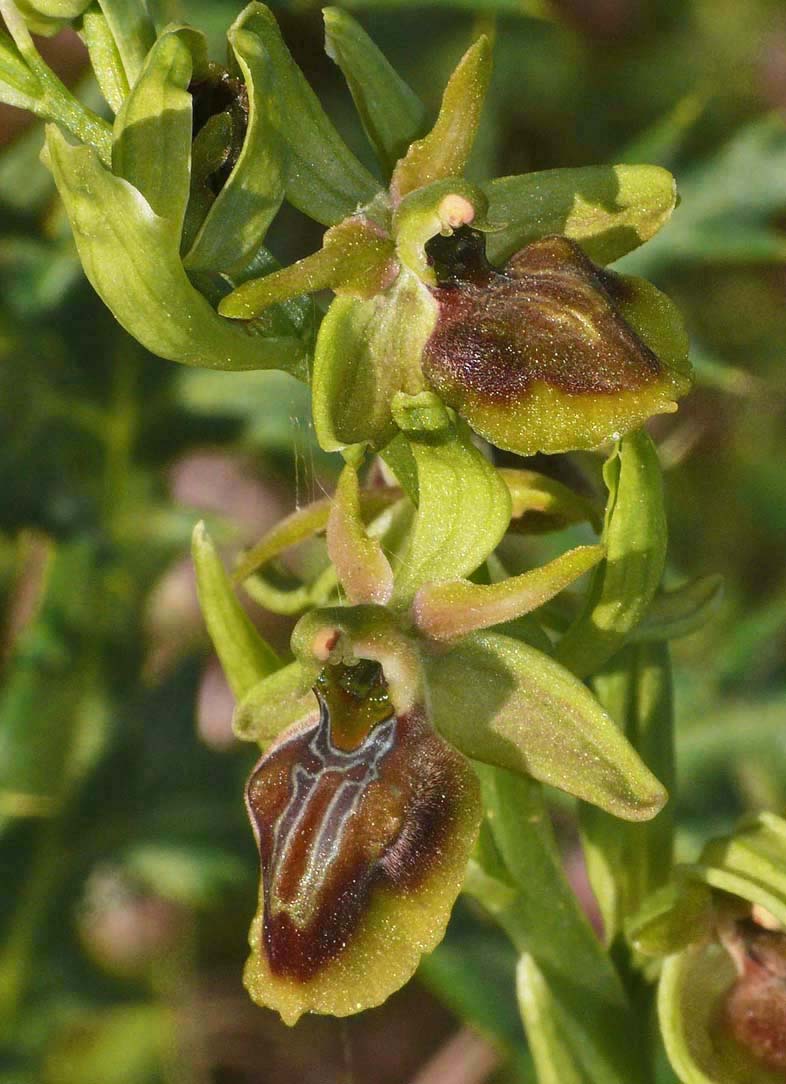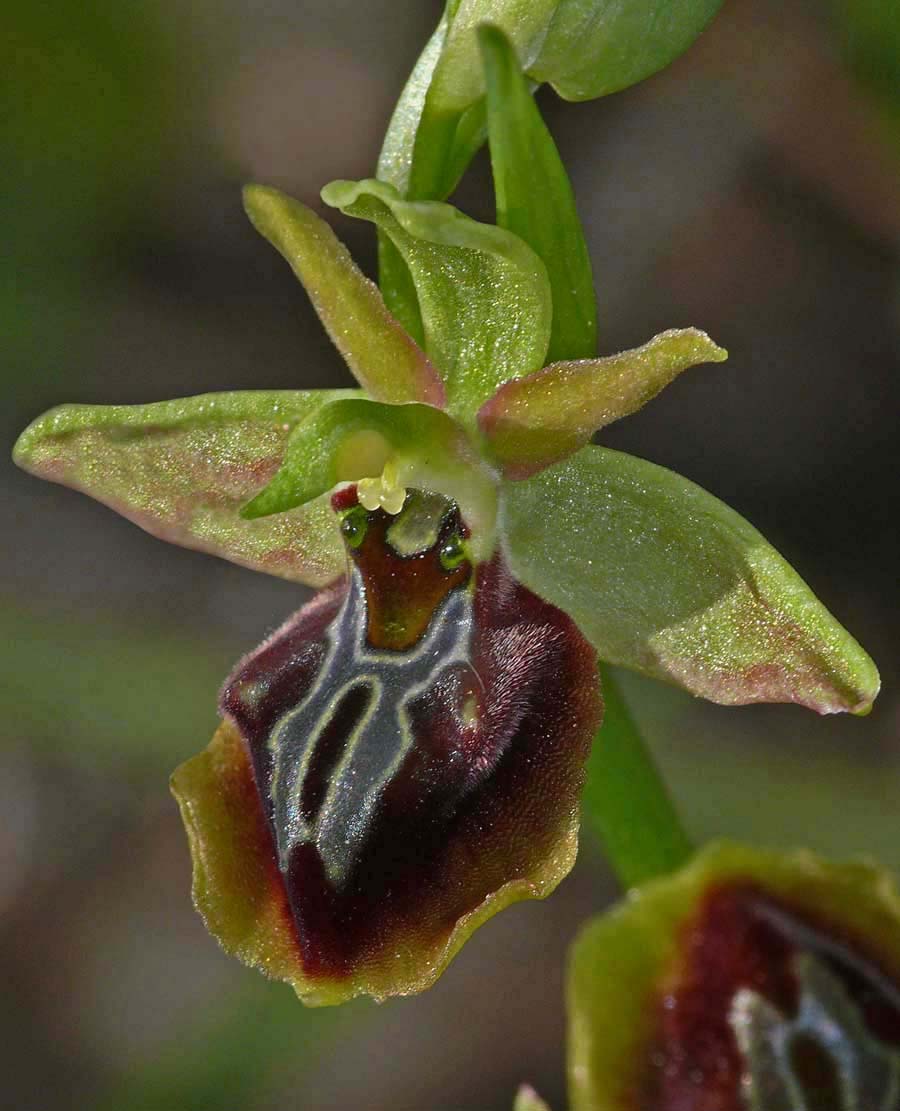O. alasiatica
was first described by Segers, Walraven and Kreutz from
Larnaca (Cyprus) in 2002 and it takes its name from Alasia, the ancient Egyptian name for the Island of Cyprus.
This species is endemic to Cyprus and is one of three similar O. mammosa group members that occur there, the others being O. morio, and O. mammosa itself. When these species appear in typical form they can be separated relatively easily, they do however, all exhibit natural variation and look alike plants are often encountered. There is also a high degree of interbreeding and hybrid clusters containing genetic influences from any or all of the above species are far from uncommon. Some of the photographs here depict flowers with uncharacteristic features but photo 1 depicts a good representation of type.
Most of the members of the O. mammosa group are believed to be the results of sympatric and/or parapatric speciation with O. mammosa at its core. In the case of the Cyprus representatives where the species grow in close proximity, the former progression would seem to be the more obvious process by which the species developed and distinguishing them can often be a challenge.
O. alasiatica in its typical form has several characteristics that help differentiate it. 1. The beak at the end of the column is rather short. 2. The basal protuberances tend to be attenuated. 3. The dorsal sepal is often curved forwards over the column. 4. The perianth (sepals, petals) are shorter and often more rounded than in either O. morio or O. mammosa. 5. The distal half of the lip is usually bordered by a broad margin that can range in colour from bright yellow to orange or red. 6. The basal field is normally of a lighter colour than the lip. The illustrations are all from Cyprus dating from the first week of March.
This species is endemic to Cyprus and is one of three similar O. mammosa group members that occur there, the others being O. morio, and O. mammosa itself. When these species appear in typical form they can be separated relatively easily, they do however, all exhibit natural variation and look alike plants are often encountered. There is also a high degree of interbreeding and hybrid clusters containing genetic influences from any or all of the above species are far from uncommon. Some of the photographs here depict flowers with uncharacteristic features but photo 1 depicts a good representation of type.
Most of the members of the O. mammosa group are believed to be the results of sympatric and/or parapatric speciation with O. mammosa at its core. In the case of the Cyprus representatives where the species grow in close proximity, the former progression would seem to be the more obvious process by which the species developed and distinguishing them can often be a challenge.
O. alasiatica in its typical form has several characteristics that help differentiate it. 1. The beak at the end of the column is rather short. 2. The basal protuberances tend to be attenuated. 3. The dorsal sepal is often curved forwards over the column. 4. The perianth (sepals, petals) are shorter and often more rounded than in either O. morio or O. mammosa. 5. The distal half of the lip is usually bordered by a broad margin that can range in colour from bright yellow to orange or red. 6. The basal field is normally of a lighter colour than the lip. The illustrations are all from Cyprus dating from the first week of March.
